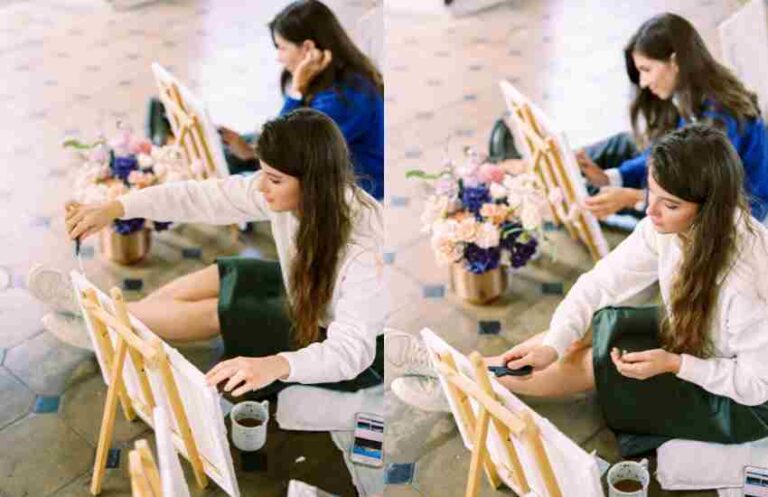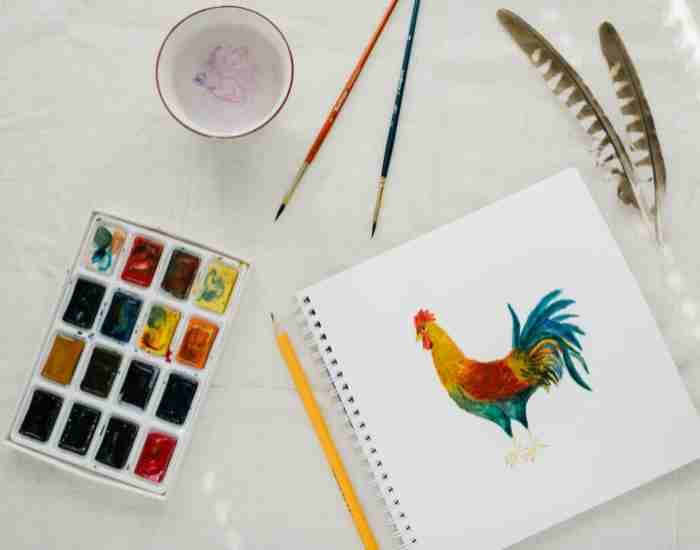Psychology of Personal Art Style: Aesthetic preferences or experience alone do not completely cover personal art style as it goes beyond that. Psychological factors which concern an individual and his or her life experiences determine how specifically the individual approaches art. Mannerism or style in art has great significance as it encompasses individuality and specific emotional experiences. The explanation of a broader topic of the influence of art in our lives explains how the psychological mechanisms operate in the relationship to the artist’s image and his or her works.
As we explore this topic, we will take a look at:
The definition and evolution of personal art style.
The theories pertaining to psychology which answers why people prefer certain styles of art.
How personality traits and cultural background shaped an art style.
Instances where clients are greatly influenced by their experience including their personal preference and how they would wish to express it creatively.
Developing a Unique Art Style
What is developing a unique art style?
Choosing to pursue an art career entails mastering a distinctive style of creating and perceiving art. It amalgamates technique, color choices, subject matter, and aesthetics. A unique art style is an artistic extension of one’s preferences, personality, and individuality. For instance, an artist who embraces bold futuristic shapes may approach self-art expression in quite a variety of ways while different artists who appreciate detailed realism may be observative and keen by nature.
Choosing to pursue an art career encompasses strong facets of specializing, which are:
Technique: Refers to the skills used in creating works of art such as painting or sculpturing which requires a certain degree of a crafted skill.
Color Choices: Artists often have set color preferences which can provide good insights about their emotional and psychological state.
Subject Matter: Refers to broader themes and preferred subjects that an artist may choose to depict that can be based on their personal interests or life experiences.
The growth of one’s self will most likely lead to emotion, which in turn will shape the artistic style of a person – this means that different aspects of a person’s evolution can, and will affect their creative expression. After going through certain changes in their lives, artists may completely abandon loud and raucous styles to more low-key and distant ones. Relatively, studies show that several life events and emotions greatly shape a person as art and music do.
Exploring the Mind of an Artist: What Shapes Art Preferences?
Psychological Theories To Explain The Appeal Of Artistic Forms And Styles: A number of theories delve on the psychological factor that explains the reason as to why a person prefers a certain form and style of art. Art preferences have been found in relation to personality traits which include: The Big Five, experience, personality.
Openness to experience – people with high scores are likely to be able to appreciate abstract art or an unconventional style of work.
Personality Traits and Cultural Background: Cultural background and art style’s development are equally influenced by personality traits. For instance, a person who grew up in a culture that is appreciative of classical art would be inclined to fashion his or her style around classical methods or motifs. However, a person who hails from a modern culture would perhaps feel free to create new age or abstract styles. Personal influences usually lay the place where personal styles of art are designed and transformed, in relation to the symbols, themes, and methods that are useful to the artist.
Real-Life Examples: Psychologically dissatisfied artists’ inclinations are side shows in the showcasing of their creations. Personal experiences serve as fine examples:
Frida Kahlo: Kahlo’s paintings are window reflecting rich personal iconography and emotional disturbance intricately woven throughout and inspired greatly by her turbulent life and mental issues.
Jackson Pollock: His life experience and psychological state greatly impacted his ability to develop an artistic expression or gives emphasis to history due to his abstract expressionist paintings.
Essential Aspects That Shape Personal Appreciation Of Art
Art and Thinking Process
How Cognitive Processes Affect Artistic Choices: Fixed and flexible aspects of cognition that include decision making and imagination are essential in the making of an artistic choice. A conception of ideas includes the process of analyzing other art forms and deciding which of those art forms fits the intention of the artist. For example, an artist may consider incorporating vibrant colors rather than subtle shades due to its emotional resonance. There is a sense of creativity within imagination, enabling the artist in thinking and developing an entirely different modus operandi of art. In the Journal of Creative Behavior scholars who authored the article do establish a link that high realistic imaginative capacity subjects are likely to engage in non-effeminate art as they are able to function outside the box of paradigms.
Self-cognition, Attention, and Work Performance
Perception and attention have a crucial effect on an artist’s overall behavior as well as an artist’s style of work. For one, the perception of an artist influences the way he interprets their observation and translates it into their work. To cite an example, the perception of an artist about color and form will determine the palette and technique they will employ. Attention, mostly on the details, can determine the level of realism or abstraction to pursue in the work. A study from Visual Arts Research postulates that there are intense detail-oriented artists who concentrate on detail in their work, thus creating intricate patterns and precise representations. On the other hand, there are those with a broader attention span who do not focus much on details, and for them, more abstract or expressive work tends to be produced instead.
Emotional Impact on Art Style
How Emotions Shape Artistic Expression: The expression of an artist along with the personal style is heavily dictated through emotions. More often than not, artists pour their emotions into a piece of work such that the resultant piece demonstrates their state of mind. For example, a piece of art which revolves around pessimism or joy can draw strong sympathy from the artist’s emotions. Psychology Today provides evidence in the form of a study claiming that emotional episodes strongly influence decision making in regard to artistic methods for instance what color to use or what the art should be about.
Case Studies of Artists:
Edvard Munch: His iconic painting ‘The Scream’ shows how emotional stress impacted his style. Distorted shapes and bright colors used in the painting reflect Munch’s psychological condition.
Vincent van Gogh: Once again, Van Gogh’s works provide evidence of the important role emotions played in the formation of Matisse’s style. His emotionally unstable and mentally-ill state can be traced through his masterful application of colors, rough strokes, seen in Starry Night.
Cultural and Environmental influences
How Cultural Background Influences Art Style: To begin with, cultural background is one of the key factors that defines strongly one’s personal style and the art one prefers. Culture carrying traditions, norms and historic events determines the subjects, the techniques, and the symbols of the artists’ works. For instance, Japanese artists may incorporate Ukiyo-e prints and other motifs designed by using Japanese vintage techniques while Western artists may be eclectic because of multiple cultural exchanges. In cross-cultural psychology, cultural background is found to be a robust predictor of artistic choices and movements which affect the overall style of art,ss the content of the artwork.
Environmental Factors and Life Experiences: Environmental factors and life experiences for example the geographical area where the artist resides, social setting and personal history also affect the artistic style development. For example, someone for an artist residing in the city has a different view compared to someone from the city because they may include skyscrapers and contemporary elements to their art unlike an artist for a rural area who may prefer natural elements. Other life experiences such as travelling or significant events can provide fresh insights as well as new techniques that complement an artist’s existing skills and therefore greatly affect their style.
How to Cultivate Your Personal Art Style
Self-Exploration and One’s Artistic Style
Methods of Self-Exploration: Engaging in self- exploration is vital when it comes to fine-tuning and forming one’s definition of art. Techniques include:
Reflective Practice: Carrying out an analysis on oneself and one’s work after an interval of time so as to notice anything that appears very often in one’s art work as a stylistic trend or technique or even a preference.
Experimentation: making an attempt to try out different mediums, different styles and even different techniques so that one might know exactly what feels personal to them.
Feedback: Requesting for comments from friends, mentors and critics so as to have a perspective towards the direction you are moving to artistically.
Examples of artists:
Picasso’s life story of self-exploration in regards to art can be noted in his life through from his realistic face on early art forms to the cubist. The way he moved through other forms in his life is an incessant transition through styles and techniques.
Georgia O’Keeffe: O’Keeffe’s transition from her traditional inclination of painting the landscapes to producing abstracts in the form of flowers is her process of self-actualization and expression through the means of her background and the environment around her
Instructions For Changing Artistic Approach:
Start Learning: Attend art courses or workshops, or simply research different artists and their works for ideas.
Set Goals: Have specific artistic assignments or goals that would help you break out from the current style that you are used to.
Keep Records: Maintain a diary or a portfolio records for patterns of the level of evolution in your art to help understand your progress over years or months.
Challenges and Their Resolutions:
Creative Blocks: Engage in new media work, collaborate with other artists and take breaks whenever you feel the blocks coming up.
Providing Versatility in Consistency: Try to find the middle-ground between the two concepts by having basic techniques or themes related to your artistic style but are open to other ideas too.
FAQs
Why is having a personal art style important?
Importance of Personal Art Style: It is the essence of artist’s identity. It allows creative freedom to the different artists. This also communicates a character more or less unique to the artist in the world. Together with this A personal art style allows for particular art works to be meaningful not only in terms of security, but also and especially in terms of emotional response, values, and events in the life of an artist. In the context of differentiation theory, personal art style contributes to the fame of the artist in the international arena of art. An article in Art and Psychology notes that a developed art style gives better chances of persuading the audience and establishing contact with them at deeper levels.
How do I find my personal art style?
Finding Your Personal Art Style: For you to pinpoint your personal art style, do the following steps:
Study Your Outputs: Take note of the themes, techniques and color patterns that you repeatedly use in your output. Try to identify trends that point out your style.
Be Adventurous: Try out other different media, styles and techniques than what you are use to. Take note of these elements and find what you are attracted to.
Seek feedback: Consult your friends, mentors or any art critics. Their opinions vary and they can shed light on your artistic tendencies and preferences in a different way.
Discover factors: Look into the aspects of your culture, emotional, and psychological experiences that affect your way of doing things. Research done by The Journal of Arts and Humanities indicates that these factors are essential as they assist you in elaborating on your artistic self definition.
How does psychology influence my art preferences?
Psychology’s Role in Determining Preferences for Art: Art provides considerable freedom of expression, while the practice of psychology is endowed with certain boundaries which are not crossed. The perception and ability to create art is fragmented by psychological elements such as personality characteristics, emotions, and even thought processes. For instance:
Personality Traits: One of the personality dimensions, which is Openness to Experience may affect preference to abstract or other innovative art styles. People who scored high openness on the Personality and Individual Differences study indicates these individuals tend to admire unconventional art pieces and/or indulge in creating it.
Emotional Responses: A person’s emotional state can determine the colors and thematic content of pieces of art. Emotional research reveals that people are so constantly influenced by their emotions that it often, even most, determines the colors and subjects of the art that they prefer.
Cultural Background: As discussed in Cross-Cultural Psychology, culture influences artistic preferences and skills. Artistic preferences can be culturally imposed as well.
Will my art style be consistent, or will it change?
Developments in Art Style: Yes, your art style can change throughout your life. Here are a few reasons as to why this occurs:
Growth in Personal Life: Life experiences typically reshape personal tendencies and thinking. For example, someone who paints real objects may gradually shift to painting abstract art, this shift is caused by a change in how the artist understands creative work.
Emotional Shifts: We go through numerous changes in our lives, from emotional instability to even life changing events, and these circumstances will begin to shape the art we create. Art therapy has shown how life events and emotional maturity affect self-expression in an artist.
Cultural shifts and Environment Change: The environment we are brought up in and the culture we are exposed to in our lives shapes us and will eventually leave an imprint on our art style. In Visual Arts Research, it is stated that artists that experience different parts of the world rationalize how their works are changed by the new surroundings they are exposed to and the style they use.
Conclusion
Recap of Main Points: To conclude, the psychology of the personal art style is in the core a fusion between the cognitive aspects, the feelings, the culture, and the history of the individual. All these factors aid in the elucidation of the processes in which personal style in art is created and what they indeed mean in terms of our personality.
Encouragement to Explore Artistic Style: Learn and nurture your artistic style because it can serve as a good means of expressing one self and in attaining personal development. When you shape and practice art, probe into its psychological basis, and gain insight into your own style.
Final Thoughts: The existence of psychological aspects and personal experiences in the creation of art brings out the uniqueness and variety of art styles. Accepting these influences will therefore help you in your pursuit for creativity and self-fulfillment as an artist.
References
- Art and Psychology: Research on the Impact of Personal Art Style on Artistic Communication and Audience Connection.
- The Journal of Arts and Humanities: Studies on Identifying Personal Art Style Through Self-Reflection and Feedback.
- Personality and Individual Differences: Research on how personality traits influence art preferences.
- Emotion: study the relationship between emotional states and artistic choices.
- Cross-Cultural Psychology: An Analysis of Cultural Influences on Art Preferences and Styles.
- Art Therapy: Research on how emotional changes affect art style evolution.
- Visual Arts Research: Insights into how cultural and environmental factors impact artistic development.
More Post



